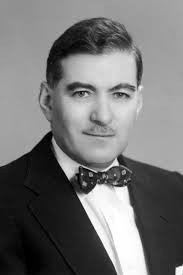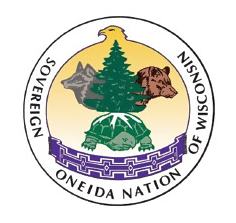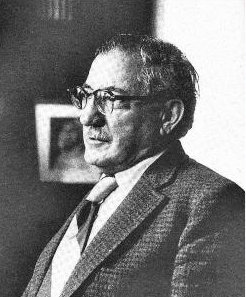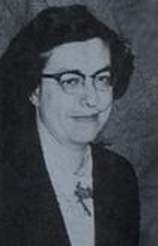
Sol Tax was an American anthropologist. He is best known for creating action anthropology and his studies of the Meskwaki, or Fox, Indians, for "action-anthropological" research titled the Fox Project, and for founding the academic journal Current Anthropology. He received his doctorate from the University of Chicago in 1935 and, together with Fred Eggan, was a student of Alfred Radcliffe-Brown.
The Society of American Indians (1911–1923) was the first national American Indian rights organization run by and for American Indians. The Society pioneered twentieth century Pan-Indianism, the movement promoting unity among American Indians regardless of tribal affiliation. The Society was a forum for a new generation of American Indian leaders known as Red Progressives, prominent professionals from the fields of medicine, nursing, law, government, education, anthropology and ministry. They shared the enthusiasm and faith of Progressive Era white reformers in the inevitability of progress through education and governmental action.

The Oneida Nation is a federally recognized tribe of Oneida people in Wisconsin. The tribe's reservation spans parts of two counties west of the Green Bay metropolitan area. The reservation was established by treaty in 1838, and was allotted to individual New York Oneida tribal members as part of an agreement with the U.S. government. The land was individually owned until the tribe was formed under the Indian Reorganization Act of 1934.

John Collier, a sociologist and writer, was an American social reformer and Native American advocate. He served as Commissioner for the Bureau of Indian Affairs in the President Franklin D. Roosevelt administration, from 1933 to 1945. He was chiefly responsible for the "Indian New Deal", especially the Indian Reorganization Act of 1934, through which he intended to reverse a long-standing policy of cultural assimilation of Native Americans.

William D'Arcy McNickle was a writer, Native American activist, college professor and administrator, and anthropologist. Of Irish and Cree-Métis descent, he later enrolled in the Salish Kootenai nation, as his mother had come to Montana with the Métis as a refugee. He is known also for his novel The Surrounded.
Nancy Oestreich Lurie was an American anthropologist who specialized in the study of North American Indian history and culture. Lurie's research specialties were ethnohistory, action anthropology and museology; her areal focus was on North American Indians, especially the Ho-Chunk and the Dogrib (Tlicho) of the Canadian NWT; and the comparative study of territorial minorities.
Native American self-determination refers to the social movements, legislation and beliefs by which the Native American tribes in the United States exercise self-governance and decision-making on issues that affect their own people.
Clyde Merton Warrior (1939–1968) was a Native American activist and leader, orator and one of the founders of the National Indian Youth Council. He participated in the March on Washington and the War on Poverty in the 1960s and was a charismatic speaker on Indian self-determination.
Pan-Indianism is a philosophical and political approach promoting unity, and to some extent cultural homogenization, among different Indigenous groups in the Americas regardless of tribal distinctions and cultural differences.
Rebecca Adamson is an American businessperson and advocate. She is former director, former president, and founder of First Nations Development Institute and the founder of First Peoples Worldwide.

The National Indian Youth Council (NIYC) is the second oldest American Indian organization in the United States with a membership of more than 15,000. It was the first independent native student organization, and one of the first native organizations to use direct action protests as a means to pursue its goals. During the 1960s, NIYC acted primarily as a civil rights organization. It was very active in the movement to preserve tribal fishing rights in the Northwest.
The following outline is provided as an overview of and topical guide to United States federal Indian law and policy:

Laura Cornelius Kellogg ("Minnie") ("Wynnogene"), was an Oneida leader, author, orator, activist and visionary. Kellogg, a descendant of distinguished Oneida leaders, was a founder of the Society of American Indians. Kellogg was an advocate for the renaissance and sovereignty of the Six Nations of the Iroquois, and fought for communal tribal lands, tribal autonomy and self-government. Popularly known as "Indian Princess Wynnogene," Kellogg was the voice of the Oneidas and Haudenosaunee people in national and international forums. During the 1920s and 1930s, Kellogg and her husband, Orrin J. Kellogg, pursued land claims in New York on behalf of the Six Nations people. Kellogg's "Lolomi Plan" was a Progressive Era alternative to Bureau of Indian Affairs control emphasizing indigenous American self-sufficiency, cooperative labor and organization, and capitalization of labor. According to historian Laurence Hauptman, "Kellogg helped transform the modern Iroquois, not back into their ancient League, but into major actors, activists and litigants in the modern world of the 20th century Indian politics."

The Choctaw Youth Movement (CYM) was a Choctaw nationalist grassroots movement born in the late 1960s in response to efforts by the federal government to terminate the Choctaw Nation. It was formed, in part, as a tribal-centric movement to counter the Pan-Indianism of other Native rights groups, such as the American Indian Movement. As opposed to AIM, the Choctaw Youth Movement practiced non-confrontational, peaceful activism, and advocated cultural revitalization and the readoption of tribal language, and taking pride in the distinctness of being Choctaw. The defense of the tribal culture and history took precedence over maintaining inter-tribal alliances.
Viola Hatch was a Native American activist, founding member of the National Indian Youth Council, and former Tribal Chair of the Cheyenne and Arapaho Tribes. She successfully sued the Canton, Oklahoma schools regarding the right of students to obtain an education.
Jolene Rickard, born 1956, citizen of the Tuscarora Nation, Turtle clan, is an artist, curator and visual historian at Cornell University, specializing in indigenous peoples issues. Rickard co-curated two of the four permanent exhibitions for the Smithsonian’s National Museum of the American Indian.

Helen Peterson was a Cheyenne-Lakota activist and lobbyist. She was the first director of the Denver Commission on Human Relations. She was the second Native American woman to become director of the National Congress of American Indians at a time when the government wanted to discharge their treaty obligations to the tribes by eliminating their tribal governments through the Indian termination policy and forcing the tribe members to assimilate into the mainstream culture. She authored a resolution on Native American education, which was ratified at the second Inter-American Indian Conference, held in Cuzco, Peru. In 1986, Peterson was inducted into the Colorado Women's Hall of Fame and the following year, her papers were donated to the Smithsonian's National Anthropological Archives and they are now held at the National Museum of the American Indian.
Willard Earl LaMere was a Native American community organizer and educational leader in Chicago, Illinois in the mid twentieth century, a period when the US government's Indian termination policy encouraged Native Americans to assimilate into mainstream American society. Working to preserve Native American culture and values as Native Americans moved from reservations to cities, LaMere was instrumental in founding, among other organizations, the Native American Educational Services College, which became the first higher education institution in an urban setting managed by and serving Native Americans. He was also the college's first graduate.
The Everett Report of 1922 was a New York State Assembly report compiled by a legislative commission led by Edward A. Everett. It concluded that "the Iroquois were fraudulently dispossessed of over six million acres of land in New York." However, the report was "buried" by New York State and not published until 1971.
The Native American Educational Services College was an institution of higher education led by and serving Native Americans. It offered a BA in public policy within a curriculum that combined academic and tribal knowledge from 1974 to 2005. Its main campus was in Chicago, Illinois but also grew to include satellite locations in Minneapolis, Minnesota, and on reservations in Montana, Wisconsin, and New Mexico.







